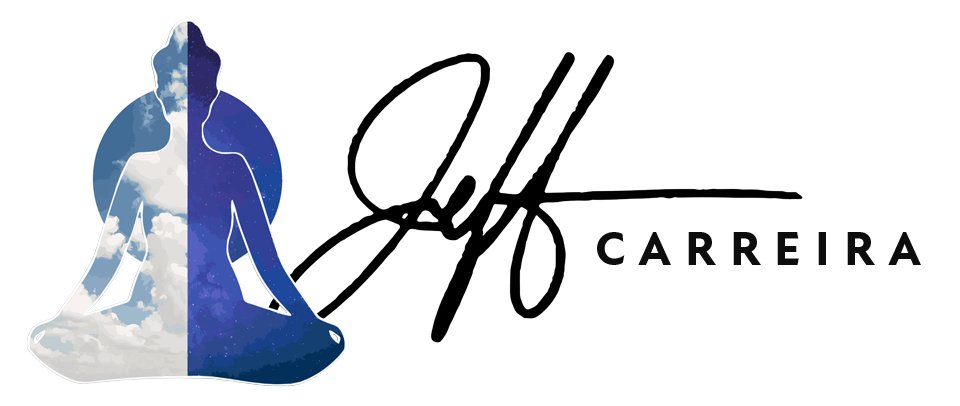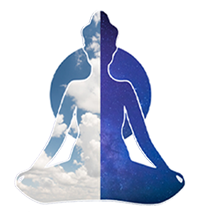In the current paradigm we are compelled by things. We look at things, work with things, accumulate things, and love things. Things are material, i.e. they matter. Things are the stuff of life.
We have been trained to pay attention to things. Things come in many forms. Money, jobs, people, feelings, birthdays, countries, and every hour of the day, are all things. Everything and anything you can name is a thing.
Things are the content of life and we’ve been trained to value content. We are content junkies.
At the same time we have been trained to ignore context and take it for granted. The content of life is what matters, the context is just the bland background whose only function is to display all the wonderful things in front of it.
Modern cosmology tells us that the ultimate context is the universe and the universe is an infinite expanse of empty space. If the ultimate context of life is nothing but empty space then it's natural to relate to contexts as necessary but largely inconsequential. The content is where the action is and so we learn to pay attention to the things that show up in the space and ignore the space beyond it.
This habit of preference for content over context will need to change in the paradigm to come. In the new paradigm we will learn to be at least equally attentive to context and content and this will change everything.
We have been taught that things are the stuff of reality and that things have qualities. We assume that everything that exists is imbued with inherent characteristics that make it what it is.
What we might fail to recognize is that qualities always exist in context and that contexts shape the qualities of the things that show up in them.
As an example it was recently explained to me that it is a mistake to think of the characteristics of Yin and Yang from Chinese medicine as qualities that things have. Nothing is either Yin or Yang, Things show up as Yin or Yang in relationship to the context that they appear in. The same thing will be Yin against one background and Yang against another.
Saying something Yin is not a description of a quality of a thing. It is a description of the quality of a relationship between the thing and the background context that it is showing up in front of.
And this is true of all of the qualities of life. Things don’t have inherent qualities, they show up with qualities that change in relationship to the background they show up against.
Take a moment to look at the things around you now. Notice that you habitually see them as independently existing objects that have qualities belonging to them.
I’m sitting in a coffee shop and I see a chair in front of me. It is tan. From where I am sitting I see it against a black background and it looks very light. If I shift in my chair I see it against a white background and it looks darker. The quality of lightness or darkness does not belong to the chair. It is a quality of relationship between the chair and the background it is viewed against.
We are taught to assume that the chair is the same and only its characteristics change. I want to ask you to experiment with the possibility that the chair you see against the black background is not the same chair as the one you see against the white background.
I ask you to consider that if a thing’s qualities change then what is it that stays the same and allows us to say that it is the same chair with different qualities? What is the thing underneath the qualities that doesn’t change when the qualities change?
In the current paradigm we are trained to preference things over space, and to assume that things exist independent of their qualities and characteristics. There is another possibility.
Perhaps when something appears different it actually is different.
Look around the room and shift your perspective around and see how things change. I see the front of the person across the coffee shop from here. If I walk a few feet to the left I start to see his back. And he becomes silhouetted in light. He looks different and maybe he is different.
The qualities of the things around us are always shifting. We’ve been taught that these shifts in appearance are irrelevant to the identity of the thing. The thing is the same thing regardless of its qualities. We assume that things remain unchanged through all of the shifts in their characteristics.
If we let go of our attachment to the existence of independent things we might be able to change the way we see the world. Maybe things don’t exist as independent objects with qualities and characteristics. Maybe they show up with qualities in relationship to the context they emerge inside of. Maybe things are not real.
Maybe the relationship that emerges between content and context is where reality can be found.
The American philosopher Charles Sanders Peirce attempted to describe all of reality based on the premise that reality could never be found in either content or context alone. Reality can only be found in the relationship between content and context.
Look around the room again. and keep shifting lenses between seeing permanent independent objects that have shifting qualities vs. emergent objects that emerge as a continuously unfolding dance of content and context.
The static universe feels dead. Everything just sits there in an inert context while different qualities dance across their surfaces. The emergent universe is alive. Everything shows up fresh and new in every moment.
Reality arises in the dance of foreground and background. This is the same dance that in Hindu philosophy is mythologized as the dance of the god Shiva and the goddess Shakti. Shiva is the background, Shakti is the foreground. And reality must have both.
Yin only exists in relationship to Yang. The world cannot exist without Shiva and Shakti. The world is not a thing that sits in empty space. The world is the dance of foreground and background, content and context.
And you yourself are not a static thing that lives its life on the surface of an inconsequential stage. You do not just exist in the world, you dance with it. You are the beingness that emerges freshly in every moment of a dance that began long ago.
Each next step of the dance is shaped by the momentum of previous steps, but it is also shaped by the ever-new qualities of the world you are dancing in. You are moving and shifting in every moment and the world is too. You are affecting the way the world shows up and the world is affecting the way you show up. You are dancing with the world and the world is dancing with you.
In fact maybe it is better not to even think of yourself as dancing. Maybe you are not a thing that dances with the world. Maybe you are the dance that happens between the being you used to think you were and the world you used to think was just a static stage.
You are not a thing that dances. You are the dance as it appears in each and every moment.


